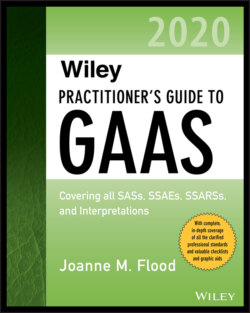Читать книгу Wiley Practitioner's Guide to GAAS 2020 - Joanne M. Flood - Страница 21
COMPLYING WITH GAAS
ОглавлениеAuditors must comply with and understand relevant AU-C sections, that is, those that are in effect and address the circumstances of the audit. (AU-C 200.20 and .21) GAAS uses two categories of professional requirements to describe the degree of responsibility the standards impose on auditors.
1 Unconditional requirements. The auditor is required to comply with an unconditional requirement in all cases in which the circumstances exist to which the unconditional requirement applies. SASs use the word must to indicate an unconditional requirement.
2 Presumptively mandatory requirements. The auditor is also required to comply with a presumptively mandatory requirement in all circumstances where the presumptively mandatory requirement exists and applies. However, in rare circumstances, the auditor may depart from a presumptively mandatory requirement. The departure should only relate to a specific procedure when the auditors determine that the procedure would be ineffective in the specific circumstances. The auditors must document their justification for the departure and how the alternative procedures performed in the circumstances were sufficient to achieve the objectives of the presumptively mandatory requirement. GAAS use the word should to indicate a presumptively mandatory requirement.
(AU-C 200.25–.26)
The term should consider means that the consideration of the procedure or action is presumptively required, whereas carrying out the procedure or action is not.
AU-C Section 200 also clarifies that explanatory material is intended to explain the objective of the professional requirements, rather than imposing a professional requirement for the auditor to perform.
